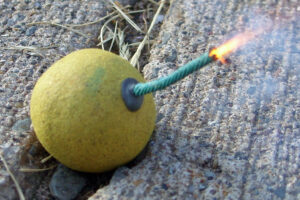Energy

Summary
Is the capacity of a body to do work. Energy is measured by the work that the body can do. Energy exists in many forms such as heat, light, sound, wind, electricity, chemical energy, solar energy, magnetic energy and nuclear energy etc. Energy exists prominently in the mechanical form which makes the body to work by virtue of its position or motion.
Mechanical Energy

The energy acquired by the objects upon which work is done is known as mechanical energy. Mechanical energy is the energy that is possessed by an object due to its motion or due to its position. Mechanical energy can be either Kinetic energy(energy of motion) or potential energy
Example: A hammer is a tool that utilizes mechanical energy to do work.
A dart gun is still another example of how mechanical energy of an object can do work on another object.
Rock on a hill top and rolling rock from hill.
Potential Energy

The energy possessed by a body by virtue of its position is called potential energy. Gravitational potential energy has the same units as kinetic energy: kg m2 / s2.
There are two main types of potential energy and they are:
- Gravitational Potential Energy
- Elastic Potential Energy
Example: The chemical potential energy of a firecracker is released when the fuse of the firecracker is lit.
Stones sitting on an edge of a cliff possess potential energy. If the stones fall the potential energy will be converted to kinetic energy.
Expression for potential energy of a body at height ‘h
Example: A body of mass m kg. If it Fig. 5.5 : A sand bag of m kg lifted to a height h metre is lifted through a height h meter from the ground level, work is done on the body against the gravitational force g. The amount of work done in doing so is mgh joules(J) which is stored in the body as potential energy. This is calculated by the formula P.E = mgh J
Kinetic Energy

The energy possessed by a body by virtue of its motion is called kinetic energy.Kinetic energy is measured by the amount of work the body can do before coming to rest.
Example :A moving vehicle, a moving bullet, flowing water, moving air, a falling body, a swinging pendulum, a moving ball, all of these possess kinetic energy.
Expression for kinetic energy :
a body mass m kg moving with the velocity v ms-1. If a constant force F Newton is applied against the motion of the body to bring it to rest, the work done is equal to its kinetic energy. This is calculated by the formula KE =1/2mv2 joules
Work

Performing an activity is commonly considered as work, Work is said to be done only if the force displaces the body in its own direction of action.
Example : A man lifting a heavy stone
Factors affecting the work
It is very clear that the magnitude of displacement is increasing over the increase in the magnitude of force applied. Hence force and displacement are the factors which affect the work.
Measurement of work
Work = Force × displacement along the direction of force.
W = F x s




























